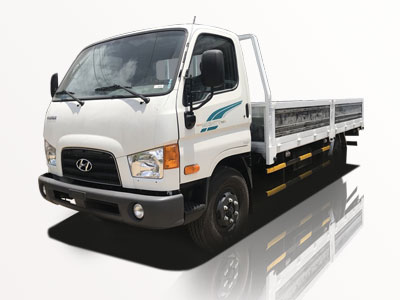Class C motorhomes have become increasingly popular among travelers looking for a combination of comfort, convenience, and drivability. These vehicles offer more space than smaller RVs while still being manageable for a variety of drivers. In this comprehensive article, we will explore the dimensions of Class C motorhomes, their layout, and how these specifications affect your travel experience. By understanding Class C dimensions, you can make more informed decisions whether you plan to buy or rent one.
What is a Class C Motorhome?
A Class C motorhome is a type of RV that is built on a truck chassis and is easily recognizable by its distinctive cab-over design, which often includes a sleeping area. It typically offers more living space compared to Class A and Class B motorhomes and is versatile enough for both family vacations and solo adventures.
Understanding Class C Dimensions
The dimensions of Class C motorhomes vary significantly based on the manufacturer and model. However, there are some general specifications that can provide a baseline for what to expect. Let’s break down these dimensions in detail:
1. Overall Length
The overall length of Class C motorhomes typically ranges from 20 to 33 feet. This length can affect maneuverability and parking, making it an essential consideration for potential buyers.
| Length Range (Feet) | Common Use Case |
|---|---|
| 20-24 | Ideal for small families or couples |
| 25-28 | Suitable for medium-sized families |
| 29-33 | Best for larger groups or full-time living |
2. Width
The width of Class C motorhomes generally ranges from 7 to 8.5 feet. This width allows for spacious interiors while maintaining road stability and safety.
3. Height
Height specifications usually fall between 10 to 12 feet, including rooftop accessories. This height allows for comfortable travel but may require extra consideration at gas stations and campsites.
Common Height Limitations
- Overpasses: Ensure you’re aware of height restrictions along your travel route.
- Campsites: Confirm that your chosen campsite can accommodate your RV’s height.
4. Interior Space
Interior space in Class C motorhomes usually includes living areas, kitchens, and sleeping quarters. The following factors determine the usable living space:
Ceiling Height
The average ceiling height ranges from 6.5 to 7.5 feet, providing enough headroom for most people.
Floor Plan Layouts
Different floor plans can maximize space differently. Some common layouts include:
- Rear Bed Configuration: Offers a separate bedroom, perfect for families.
- Full Bath Layout: Provides more accessibility for larger parties.
- Slide-Out Features: Adds extra square footage when parked.
Factors Affecting Dimensions
Weight Considerations
Class C motorhomes also have weight limits that affect their dimensions. Gross Vehicle Weight Rating (GVWR) typically ranges between 10,000 and 14,500 pounds, which affects handling and performance.
Storage Space
Storage compartments also vary in size and are crucial for a comfortable traveling experience. Adequate storage allows you to carry essentials without cluttering the living area.
Towing Capacity
Some Class C models come with towing capabilities, adding another dimension to consider. Average towing capacities range from 2,000 to 5,000 pounds. Check the specifications for your model to see what you can tow.
Practical Examples of Class C Motorhomes
1. Winnebago Spirit 22M
This model is known for its compact size (22 feet) and efficient use of space, including a Murphy bed and galley kitchen, making it ideal for couples or small families.
2. Thor Motor Coach Quantum WS31
The Quantum WS31 offers more room (32 feet) and features a slide-out for additional living space, perfect for larger gatherings or families.
3. Forest River Forester 2861DS
A spacious option with a length of 28 feet, this motorhome includes two slide-outs, providing ample room for activities while parked.
Buying Checklist for Class C Motorhomes
If you’re considering purchasing a Class C motorhome, here’s a handy checklist to help you evaluate dimensions and suitability:
- Overall length and width for maneuverability.
- Height for parking and campsite regulations.
- Interior floor plan and ceiling height for comfort.
- Storage areas and weight distribution for capacity.
- Towing capacity for any additional vehicles or trailers you may need.
Tips for Using Your Class C Motorhome
1. Practice Driving
Before hitting the road, test drive your Class C motorhome to gain comfort in handling its dimensions, especially if you are inexperienced.
2. Use Technology
GPS navigation systems designed for RVs can help you find routes that accommodate your rig’s dimensions, avoiding low bridges and narrow streets.
3. Maximize Storage
Plan your storage efficiently by utilizing bins and organizers. Consider vertical space for bulky items.
Frequently Asked Questions (FAQ)
1. What is the average size of a Class C motorhome?
The average size ranges from 20 to 33 feet in length, 7 to 8.5 feet in width, and 10 to 12 feet in height.
2. Can a Class C motorhome fit in a regular parking space?
While many Class C motorhomes are long, they can often fit in standard parking spaces. However, check dimensions to be sure.
3. Do Class C motorhomes have good fuel efficiency?
Fuel efficiency varies, but most Class C model returns between 8 to 12 miles per gallon, depending on size and weight.
4. Are Class C motorhomes suitable for full-time living?
Yes, many models are designed for full-time living and feature the space and amenities needed for comfort.
5. What is the height of a Class C motorhome with a rooftop AC unit?
Typically, a Class C motorhome with a rooftop AC unit can reach heights up to 12 feet.
6. How do I calculate the towing capacity of my Class C motorhome?
Your RV’s towing capacity is usually indicated in the owner’s manual and can be calculated based on its GVWR.





